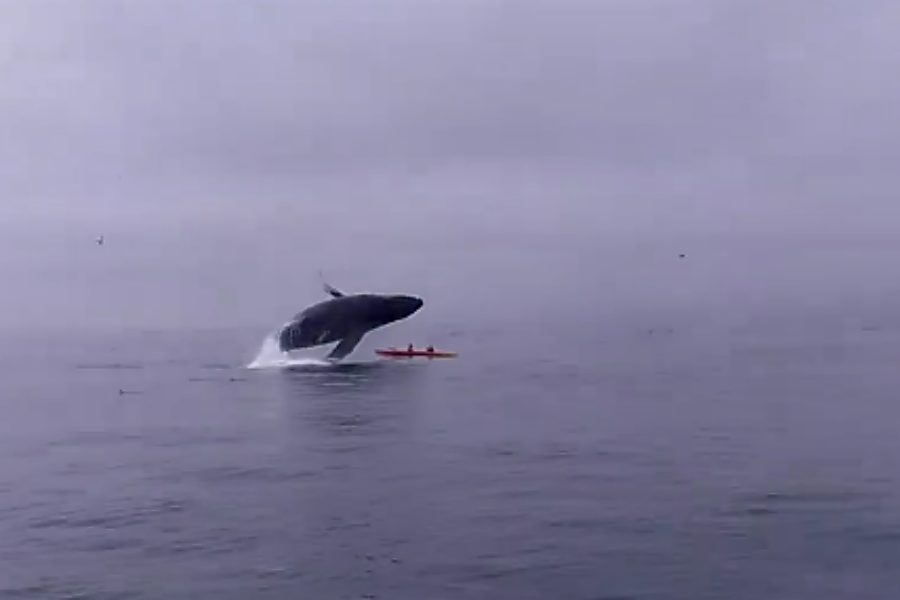Kayaking with whales? Beware of airborne humpbacks
Loading...
Gone whale watching? Mind the falling humpbacks.
A viral video is a vivid reminder that no matter how much you love whales, the sight of 40 tons of airborne humpback performing a full 180-degree breach overhead and plummeting toward you is not the safest way to observe them in their natural habitat.
Still, some conservationists say they are glad that more humans are choosing to go into the wild to see the Earth's fauna, rather than paying to see wildlife in captivity.
The video of the approximately 45-foot-long whale landing on a tandem kayak, filmed by Sanctuary Cruises passenger Larry Plants near Monterey Bay's Moss Landing, Calif., harbor, has gone viral after it was shared by the company on Facebook Saturday.The two people in the kayak took a glancing blow and were unharmed.
Since the incident, Monterey Bay Kayaks has reportedly halted its whale-watching tours, citing the safety of both its kayakers and the whales, according to CNN.
“Kayaking with whales can be extremely dangerous. It can turn into a life or death situation real quick-like. Within seconds. It was very scary to watch,” wrote Sanctuary Cruises captain and co-owner Michael Sack, on the company's blog. “Today a couple of kayakers were very lucky. They came very close to getting crushed to death by the mighty humpback whale.”
John Hocevar, Greenpeace Oceans Campaign Director, responds to the incident by recommending that those who wish to interact with marine mammals first review NOAA's recommendations for safe viewing of marine mammals, which is a mix of guidelines and regulations.
“When humans enter the ocean, we are visiting a wilderness full of wild animals,” says Mr. Hocevar in an email response. “Of course, man's interaction with marine life has proven to be far more dangerous for the fish, dolphins, seals, whales, and other species who live there than for the human visitors. We have killed most of the large predator fish in the ocean, driven several species of marine mammals to extinction, and decimated populations of many others.”
“This is no reason to be cavalier about the risks in approaching large, unpredictable wild animals,” he adds. “Staying 100 yards away from whales makes good sense, and in some areas it is the law. Keeping your distance from whales is important for your own safety as well as for that of the whales. Even kayakers can disrupt whale behavior and cause stress to animals that are already reeling from the impacts of pollution, climate change, ship strikes, and overfishing.”
Ashley Byrne, campaign specialist for People for the Ethical Treatment of Animals (PETA) says, “While, of course people need to exercise more caution, for the safety of the animals as well as the people going to see them, at least we are seeing an increased number of people who would rather see animals engaging in their natural behaviors in their natural habitat instead of places like SeaWorld.”
Ms. Byrne also recommends the iOrca virtual reality wireless Google goggles which the group has been offering outside various aquariums across the nation.
“iOrca is an empathy building experience, not only to let people see orcas in the wild but to see through the eyes of an orca in the wild and understand that all animals suffer when torn from their environment,” Ms. Byrne adds.
“We came from the sea, and for many of us there is nothing like the experience of returning to the ocean even for a little while,” Hocevar concludes. “As with all things we do, it is important to be conscious of the impacts our actions can have, and act responsibly. In this case, it may be good for your own health.”








